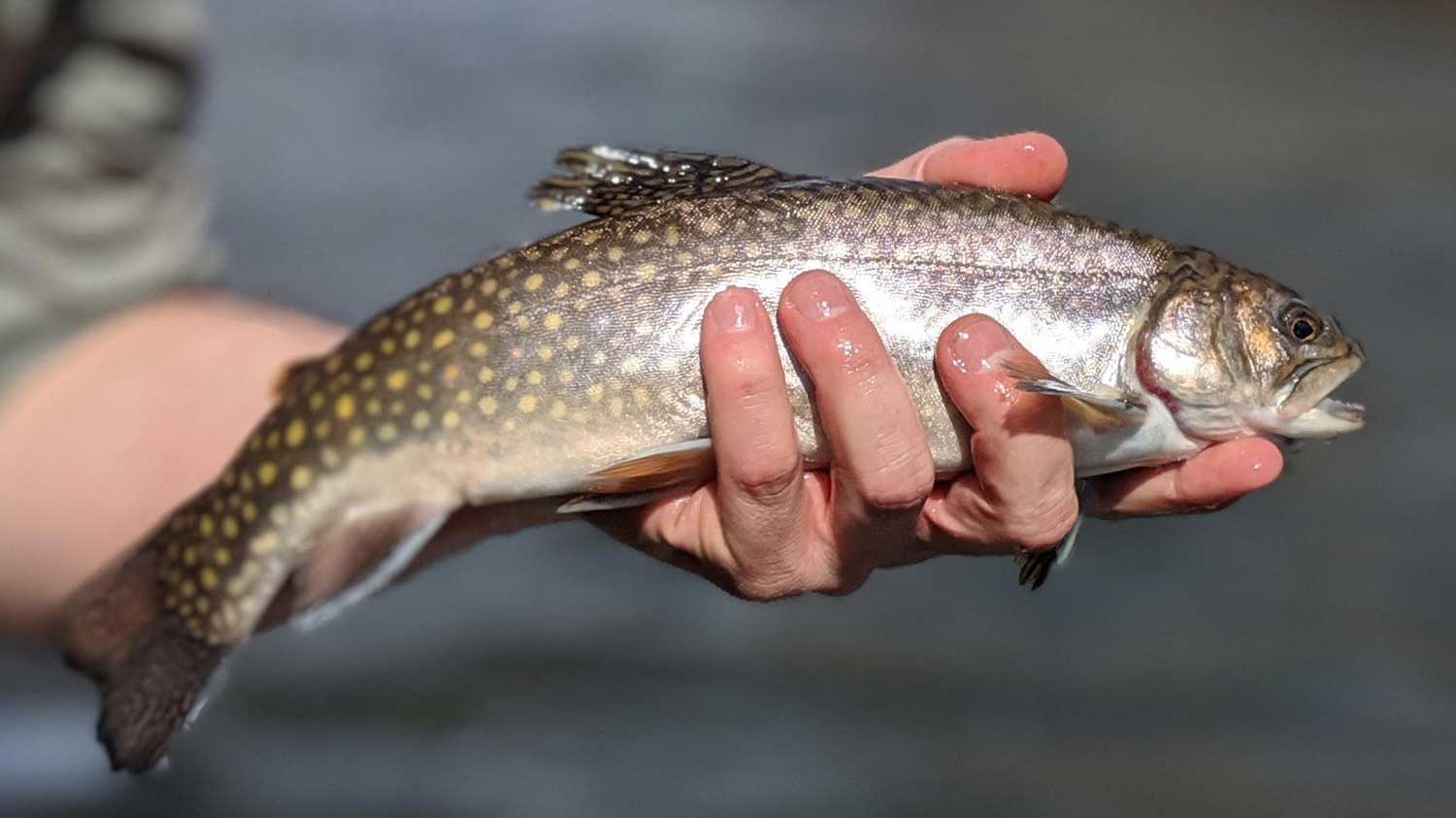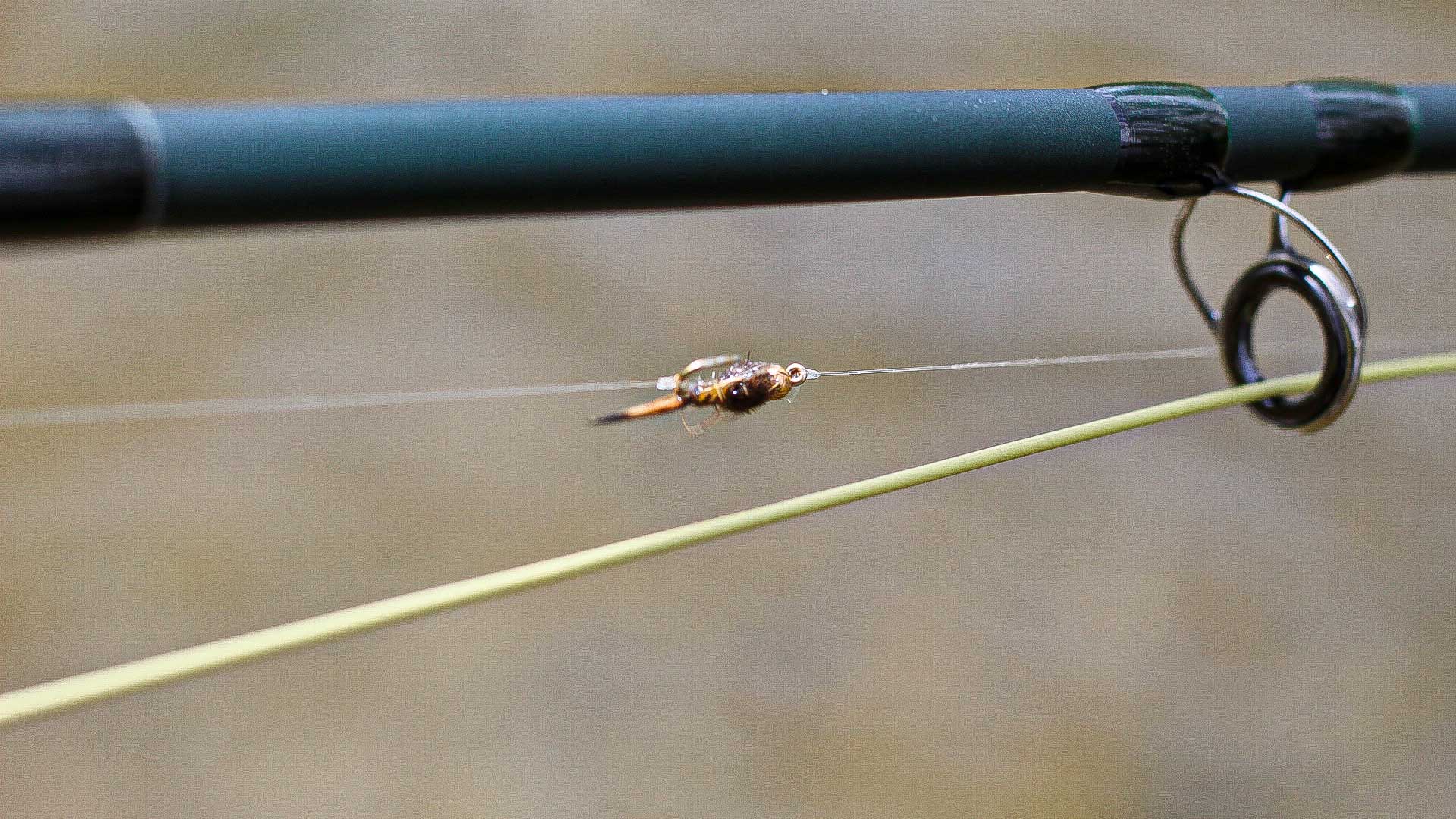
The art of fly fishing is a focused, calming experience that can take you all around the world. Many find standing with their fly fishing rod, aiming for the perfect balance of skill, placement, and just a little bit of luck, almost meditative. There's no doubt that you need the right fly fishing gear to get the best out of it - from rods to waders and everything in between. Our expert guide will give you the lowdown on what you need to buy to get the best experience when you go out to trout fish. You're in the right hands to get your fly fishing bag sorted out, ready for new adventures.
What Fly Fishing Gear Do I Need?
Getting into fly fishing is now easier than it has ever been. You do need specialist equipment, but entry-level items can be bought quite cost-effectively or sourced second hand, to begin with, and tuition is available. The best way to start flyfishing is to purchase the basics and get out into nature - it is so much you learn from experience. Fly fishing is one of the easiest types of angling to get into as the kit is relatively simple. Start with the basics and add more complex fly fishing gear as your confidence and skill level increase.
Basic Fly Fishing Gear For Beginners
To start with, these are the best items to get into your kit when you're looking for how to fly fish. We'll examine each of these items in more detail, but as a primary starter you will need:
Fly Rod
The length you select depends on the type of fishing you are planning. For most Stillwater fishing, a 9ft rod serves the purpose well. Rods come in different weight classes, which we will examine in more detail. 6 or 7 weight will suit most purposes.
Fly Reel
The model you select should match your rod's rating - fishing gear shops can advise on this. Reels can get relatively expensive, but it's fine to start with just a basic model as a beginner.
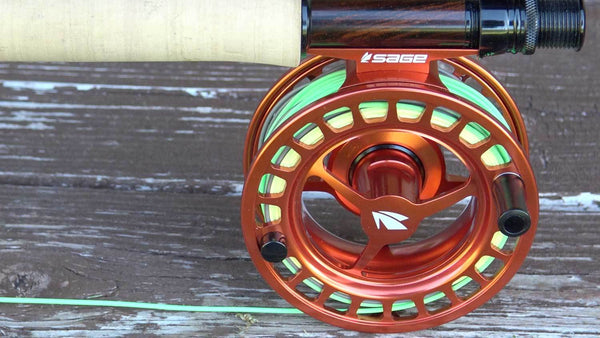
Fly Line
Again, the rating of your rod will determine which fly line is most suitable. A weight forward floating line is the one, to begin with - you can progress to sinking lines as your technique develops. A line is an area where you may want to spend a little more to be sure of the quality, as it can make a big difference to your experience.

Landing Net
An important piece of fly fishing gear to land your catch. Purchase the net and handle as one, rather than separately.

Leaders
You might be wondering, 'what is a fly fishing leader?', as it's not apparent to most people. Your 'leader' is a thinner line that sits between the fishing line and your fly. About 6lbs of strength is a good starting point for all-around fly fishing, and try to source a tapered leader for best results.

Tippet
Tippet is an additional monofilament or fluorocarbon line that is attached to your leader to extend your line. This comes in multiple different sizes but to start out fly fishing for trout we recommend, 4x 5x and 6x.
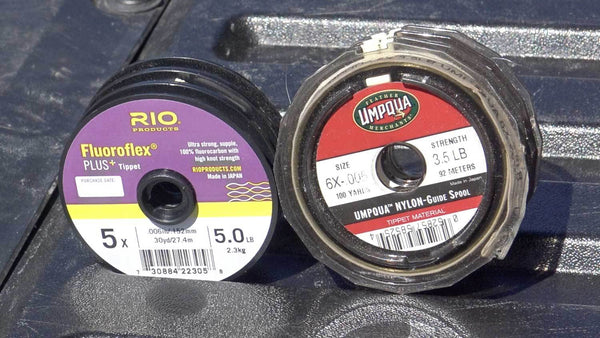
Flies
There are so many different types of flies out there. There are close to 6000 fly patterns on the market today, and getting to know them all can be a bit of a hard job. When starting, get a fly kit that carries tried and true patterns that will work great on both Stillwater and rivers.
A Licence or Permit
Depending on what location you intend to start fly fishing in, you will need some kind of official permit or paperwork, such as a rod license. Different types of permits exist, and exceptions do occur, so do your research as to what is required in the area you want to start fly fishing.

Fly Vest or Pack
A fly vest is a sleeveless jacket covered in multiple pockets where you can stash flies and other bits of kit. It's extremely practical as it allows you to keep your hands free while using the rod and have everything you need with you - and it also keeps any chills out. You can also opt for a more streamlined pack to carry your essentials.

Forceps
This tool helps you to remove the hook once you’ve landed a fish, or to de-barb them if you are planning to release the fish back into the water
Fly fishing waders - Sturdy, waterproof pants and boots that cover the legs and lower body, allowing you to stand comfortably in the water while you angle for a catch.

Split Shot or Weighted Puddy
When Nymph Fly Fishing it is always good to have an additional weight that you can add to your fly rig to get your flies down to the feeding zone of the trout.

You may also want to add on items such as:
Fly fishing hat
Both to keep the sun out of your eyes and to keep you weatherproof.
Sunglasses with polarised coating
These serve a double purpose, making it much easier to ward off any glare from the water and see what you’re doing clearly, but also protecting your eyes.
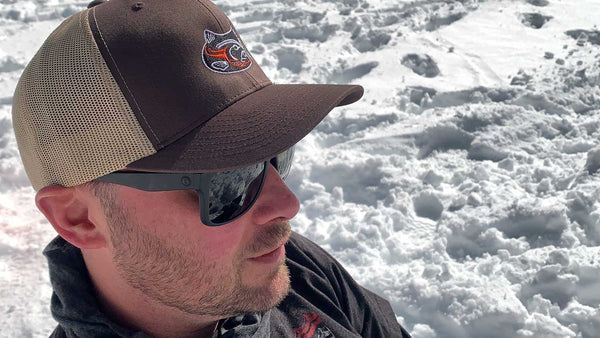
A fly box
This keeps all your flies in neat and organized order, ready to grab when you need them.
Floatant
When dry fly fishing, floatant helps your dry fly stay on top of the water. Some come in a lubricant form and others a dry powder.

Getting set up in fly fishing does require some investment in flyfishing gear, but once you have the basic kit sorted, you'll soon be up and running. A fly shop will be able to advise and supply all of the basics that you might need, and supplies are easy to source online these days. Of course, you will want to know that you're making the right choices and have the best fly fishing wear to keep you protected and ready to deal with the great outdoors. Let's take a look in more detail at getting the right fly fishing supplies for success in your new venture.
How To Choose The Right Fly Fishing Rod
Choosing the right rod comes down to a number of different factors. First of all, there is always a personal preference to take into account. There are also the most likely conditions that you will begin fly fishing in and choosing a rod that will suit the catch and the circumstances.
Your rod is one of the main investments you will make. Each rod has a different action, which is a matter of personal preference, but beginners often find mid-action rods easier to handle. The price of a good rod for flyfishing varies enormously, so decide what budget you have available to spend ahead of time. Circumstances play a considerable part - think about where you are likely to be fishing most.
|
Location |
Length |
Weight |
Purpose |
|
Small Stillwater |
5-8 feet |
3 or 4 |
Small flies on light lines |
|
Large river |
9-10 feet |
5 or 6 |
Good reach |
|
Large Stillwater |
9-10 feet |
7 |
Fishing on a boat |
|
Czech nymph technique |
10-11 feet |
3 |
Special casting method |
Typical Weight Class of Fly Fishing Rods
One of the most confusing aspects for those who are planning to start fly fishing is working out the weight class of the rod required. The length is a more straightforward measurement to understand. Still, it also pays to know why you would need a particular weight class of rod in any given situation, whether that's on a boat fishing trip or trout fishing in America. The two main factors that determine what rod weight you will need are which fish you're planning to land, and the nearby fly fishing.
|
Catching |
Surroundings |
Rod Weight |
|
Brownies/Grayling |
Small stream, brook |
#2/#3/#4 |
|
Brownies/Grayling |
Smaller river |
#5 |
|
Brown Trout/Rainbow Trout |
Rivers, small lakes |
#6 |
|
Rainbow Trout/Blue Trout |
Lakes, reservoirs, boat fishing |
#7 |
|
Rainbow Trout/ Blue Trout/Salmon |
Reservoir, boats, saltwater |
#8 |
|
Large Trout/ Bass/ Pike/ Salmon/Steelhead |
Large river, reservoirs |
#9 |
|
Salmon / Saltwater Fish |
Large river, saltwater |
#10/#11/#12 |

What is Fly Rod Action and What should you get?
Let me preface this section by saying that there is no precise method for determining proper rod action. But, in general, the following will give you an overview of the topic.
FAST ACTION
A fast-action rod is built to have the least amount of flex. The stiffness of a fast-action rod is ideal when you’re going for larger fish, and it is the best for making long casts. It can also help bring in a fish faster because you have more control over the line after you have hooked into one. Another benefit of a fast-action rod is that it cuts through the wind with ease.
These sound like great things, but if you’re in an area where the fish are typically smaller, this could make a fun catching experience seem too easy.
MODERATE-FAST ACTION
A moderate-fast-action rod offers a good mix of performance and versatility. It works excellent for dry flies and also nymphing, and will still work great in the wind. It also offers a level of flex that will help play the fish with breaking your fly off. This rod is excellent for most anglers and fishing scenarios.
MODERATE ACTION
A moderate-action rod is a great choice for beginners. It is flexible but also has the right amount of stiffness. The rod will bend on the top half of its length and remain stiff on the lower half. This will help improve the accuracy of your casts because it follows the natural timing of the arm action of a beginner fisherman.
SLOW ACTION
A slow-action rod is modeled after the original bamboo fly rods. They were built for accurate short casts that easily hit the water, especially small rivers and streams. They are flexible throughout the entire shaft, making them ideal for using small dry flies and nymphs. These rods are also forgiving if you are not a strong caster.
Knowing what type of fly fishing you are likely to be doing most of can help to determine the kind of rod that is most suitable, to begin with.

Selecting The Right Fly Fishing Reel
Your choice of a reel is also determined by the surroundings and type of fish that you are most likely to encounter. It is unnecessary to have lots of different reels, to begin with, especially as they can be one of the more expensive pieces of fly fishing gear. Reels come in weight classifications, similar to rods. Your reel should be matched to your fly rod. Mostly a light to medium weight is excellent for a beginner unless you're planning to catch salmon - which needs a higher capacity reel to hold a select line.
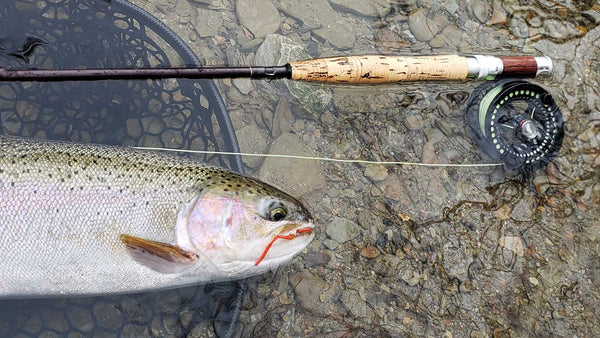
Buying A Fly Line
Lines are another variable in fly fishing. Many different types are depending mostly on where in the water you're trying to cast your line - intermediate, floating, sink, fast sink, or midge tip. As a complete beginner in fly fishing, you should go for a floating line, which is easier to cast and identify bites on.
What Should You Wear For Fly Fishing?
Aside from things like your rod, lines, and reel, proper clothing is one of the most critical elements for a beginner at fly fishing - it's no exaggeration to say that it can make or break your experience. Fly fishing is all about being out in nature and appreciating the great outdoors.
If you are cold and wet or get sunburned and dehydrated, you will soon want to call it a day, so ensuring you have the right equipment is a big deal. It's a matter of comfort but also of good health. Here is the basic apparel you will need: a fly fishing hat, polarized sunglasses, and fly fishing waders.

Polarized Sunglasses As Fly Fishing Wear
Now when you think of essential purchases for fly fishing, sunglasses might not be top of the list. But in fact, they are a crucial part of the kit and necessary to have a good experience. There are two main reasons for this:
-
Visibility - When you're facing a body of water such as a stream, reservoir, a lake, or even on the sea, water can cause a lot of glare. This means that it's easy to strain your eyes, and also to miss movements in the water or not be able to see your line properly. Polarized lenses are ideal because they remove the glare, resulting in smoother, more precise fishing.
-
Safety - There is a real risk, especially as a beginner to fly fishing, that when casting your line, it can wind up flicking back and hitting you in the face, so sunglasses can protect your eyes from any accidents.
Like most fly fishing wear, the prices can vary. Polarized sunglasses suitable for outdoor pursuits come in two main types:
-
Polycarbonate lenses
-
Glass lenses
Polycarbonate lenses are the lightest, but the glass may wear better over time - mostly, the difference is down to your personal preference and budget. You can also get different colored lenses - copper is an excellent choice for Stillwater fly fishing, while yellow handles low light conditions well, blue works better for saltwater environments.

Choosing The Right Waders And Boots For Fly Fishing
These are the items that have the most prominent part to play in keeping you comfortable, dry, and warm and enhancing your fly fishing experience. Backcasting your line requires quite a bit of space, so you will find that you need to leave the bank and get into the river to maneuver properly.
This means that waterproof waders are a non-negotiable piece of kit for any fly fisher. In fact, as you try to track down that grayling, you can often find yourself up to your waist in a chilly lake or reservoir. There are different types of waders to suit different conditions. The main types are:
-
Neoprene
-
Rubber
-
Breathable
As you can imagine, each of these has different benefits to offer the beginner fly fisher, and again, you should select what you need according to the conditions you will mostly be angling in. Neoprene waders are made of the same material as scuba diving suits, which is light and durable.

They are well insulated to keep out the chill, so they're ideal if you're immersed in cold deep water. Neoprene is also floatable as small air bubbles get trapped in the fabric and help the waders to float. Rubber waders are very practical and extremely waterproof, but they are heavier.
Breathable waders are an excellent all-round choice. They can be easily layered up with other garments, making them quite adaptable to different weather conditions - so you can wear them from a hot summer day right through to winter for year-round fishing.

Wading boots are also essential for any angler. You can purchase them with either felt sole or rubber boot soles. This grip is important to stop you slipping on slick wet rocks and riverbanks.
When purchasing wading boots, you always need to go a size up from your usual shoe size. Usually, these boots are worn with a waterproof neoprene sock to ensure feet are kept dry, but this means you will need extra room in your boot to accommodate them.

Other Items Of Fly Fishing Gear
A wading jacket or vest is another valuable addition to your kit. A good jacket will provide lots of warmth and comfort for outdoor conditions and much-needed storage space for lures and lines. Most come with plenty of pockets and D-rings that you can attach things to. Without this, you'll be making a lot of trips back and forth to the river bank for supplies.
A fly fishing hat is also a great addition to have, as it keeps the sun and glare out of your eyes and off your head on hot days, as well as keeping showers at bay. Many anglers also like to have a foldable camping chair with them to provide a place to perch and rest their feet for a while, as well as a thermal flask to keep hot coffee or soup in.
You can also get a wading staff to keep you steady as you go into the water. A good fly shop can kit you out with everything you need. Finally, every angler needs a fly box to keep their flies organized and secure.
These items are so small that they are easily lost if loose in a bag or pocket, so these plastic chests with small sectioned compartments are ideal. That way, if the box gets shifted around in transit or accidentally dropped, the flies won't get all mixed up. You can also get mini fly boxes that fit into a pocket or clip onto your vest for easy access while you're in the water.
Once you have all the right fly fishing gear sorted, you’ll be all ready for a great adventure.
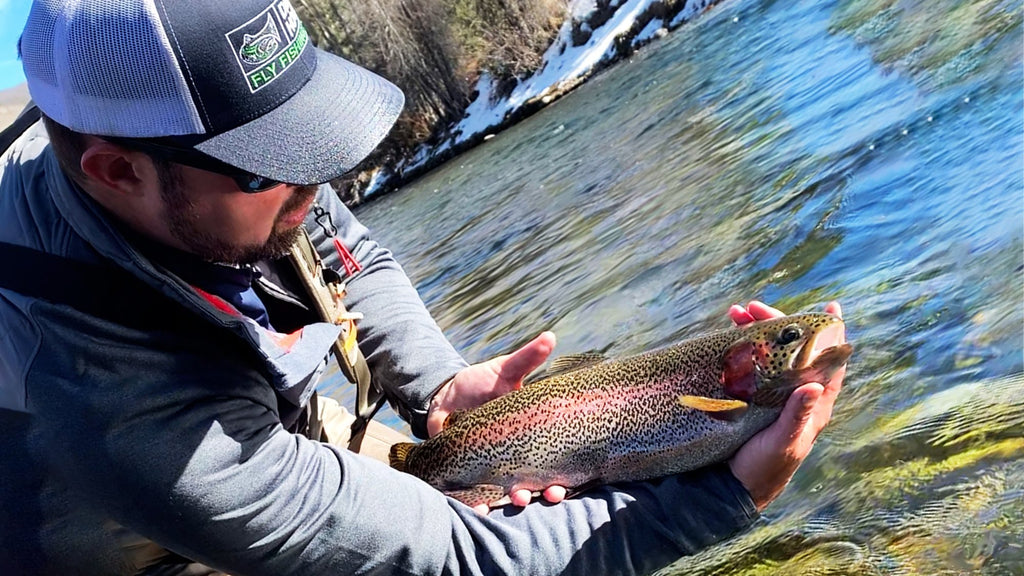
About the Author
Matthew Bernhardt, a third-generation Coloradan, grew up at the forefront of the state’s fly-fishing revolution, enjoying time on the water side by side with experienced guides and lifelong anglers.
By combining his passion for fly-fishing with input from other experienced fly-fishers and guides and his fine arts degree from Colorado State University, Matthew spent five years carefully developing the Drifthook Fly Fishing System, built to help every angler catch more trout.
When he’s not spending time with his wonderful family, you’ll find him out on the water catching MONSTER trout, and he anxiously looks forward to the day when his kids are old enough to join him there.

